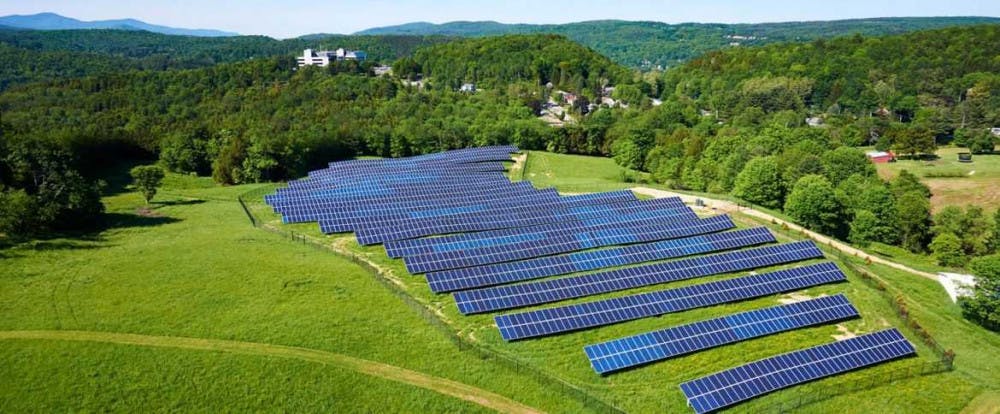MIDDLEBURY — At a public hearing facilitated by the Middlebury Selectboard on March 27, town residents weighed in on the proposal of a 40-acre solar farm installation off of Halladay Road. This meeting made clear that the local response to the proposition is nothing short of major contention.
GroSolar’s proposal calls for the purchase of forty acres of land near the intersection of Old Middle Road and Halladay Road in Middlebury. Given the landscape, the company has assured the town that the majority of the farm would be hidden away from locals and passerby, minimizing any eyesore the installation might cause.
Despite these promises of reduced obtrusion, many remained unconvinced at the hearing. “I don’t see solar panels — acres and acres of them — any different than I do advertising billboards,” said Halladay Road resident Lou Varricchio to the Addison Independent, expressing his doubt about the project.
However, some locals feel optimistic about the prospect of the installation. “I find virtually all renewable energy projects to be beautiful,” said Middlebury resident Steve Maier to the Addison Independent.
Resident Charlie Kireker expressed similar support of the project. “This is precisely the type of thing a forward-thinking town like Middlebury should be embracing,” he said to the Addison Independent. “I salute the town for pursuing this and the developer for bringing it forward.”
To ensure that construction operates within the interest of Middlebury and its citizens, the public hearing worked as a forum to craft a memorandum of understanding (MOU). This will give locals more control over installation details as the solar farm’s application nears state approval. GroSolar’s project does not require local permission, just Certificates of Public Good from the Vermont Public Utility Commission. Nevertheless, the state is likely to take the interests of the town into major consideration for the process and the MOU will likely facilitate the realization of the project.
At the public hearing, town members heard the proposal and worked to draft an MOU that would reflect their interests. This draft included requests that the road to the site be maintained, that local firefighters be given training for potential emergencies and that flowers be planted on the site to attract pollinators. The MOU also stipulated that groSolar pay 40,000 dollars in municipal taxes to Middlebury annually.
Finding the best possible deal from groSolar has been a difficult process. “This kind of space is really valuable; we might need it ourselves…” said Middlebury Energy Committee Chairman Ross Conrad. “[We need to] negotiate hard and get a good deal.”
At the hearing, The Middlebury Energy Committee made several recommendations of their own. Included in those suggestions was that Middlebury and its citizens be given preferred access and rates in future projects and that groSolar help the town design and integrate its own solar system.
Conrad advised wariness towards the project. “We can’t use up all our land supplying renewable energy for places outside of Vermont,” he said. “This is a big project, and there are not a lot of really good spaces in Middlebury for something like this. This might be the best spot for this kind of project, if it’s going to be approved.”
Despite the MOU’s attempt to include a range of opinions, many local residents maintained their resolve against the installation.
“The project is just very large and out of scale,” said town resident Bob Champlin to the Addison County Independent. “Middlebury should look at smaller projects. Perhaps we should let other towns do some of this rather than us do such a very large project… It’s a mistake to put such a large solar project up in that area.”
Still, some remained positive about the plans. “I think the siting is fine,” said resident Ed Sommers. “The project is wonderful and I’m happy we’re considering participating in this (solar) revolution.”
Given that the future of the project will largely be defined by residents, voices such as these could prove pivotal in the next steps of the installation’s development.




